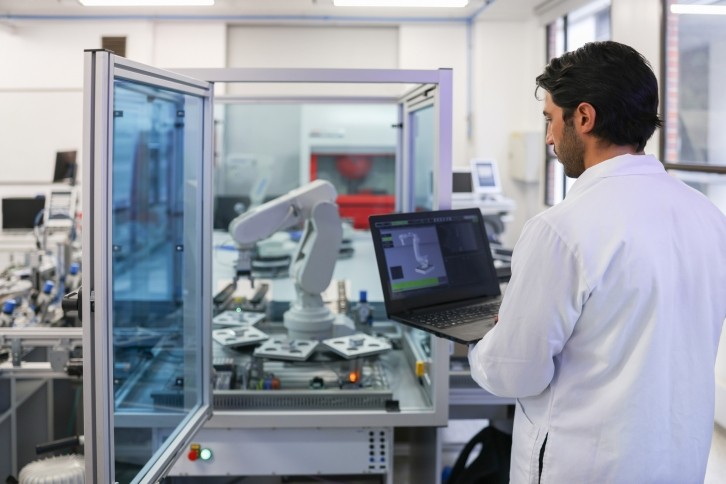Get a grip: New Singapore robotics innovation aims to overcome ‘risk averse’ food manufacturers

The researchers from the Singapore University of Technology and Design (SUTD) saw an opportunity in the use of soft robotics to improve the efficiency of manufacturing and assembly operations – where the tasks of this nature tend to be repetitive.
“In our conversations with potential users, we found that food assembly was a potential big market. We met a few times with SATS that takes care of catering for Changi Airport and Singapore Airlines. The challenge is that you need to manipulate objects that have very different consistencies, depending on whether you have a Western menu, Chinese menu, Indian menu, you need to manipulate the vegetables, rice, noodles, schools, and some stew.
“These are things that you cannot automate easily with standard tools. That's why humans are still the best option. We started looking at that specific space. In my group, one of the ideas we decided to explore was multimodal grippers,” Prof. Pablo Valdivia y Alvarado, Principal Investigator and Team Lead of the project, told FoodNavigator-Asia.
With funding support from A*STAR’s National Robotics Programme, they came up with a reconfigurable workspace soft (RWS) robotic gripper.
The robotic hand optimises machine vision to adapt to the ‘workspace’ configured in the system, so the RWS robotic gripper is equipped with the ability to scoop and grasp a wide range of items.
Their findings were published on the Soft Robotics Journal, titled “A Multimodal, Reconfigurable Workspace Soft Gripper for Advanced Grasping Tasks.”
Currently, the robotics used in the food manufacturing sector still require some level of human intervention to ensure smooth flow in the operations.
Prof. Alvarado claimed that traditional robotics are “less sophisticated in technology” and “more rigid in function”, whereby they do not have the advanced capabilities to grasp delicate and precise items.
Watch the video for a demonstration of the RWS robotic gripper grasping various food items:
Demonstration of RWS robotic gripper grasping various food items (Source: SUTD)
Uptake of automation in food manufacturing
Prof. Alvarado said that most of the automation in the Food and Beverage (F&B) sector is concentrated in food service, rather than manufacturing; and Japan leads the global market when it comes to adoption rate.
According to Report Ocean, the food robotics market in Asia-Pacific is projected to reach $1,162.3 million by 2023, growing at a 14.6% CAGR over 2019 – 2026. It remains as the largest regional market across the globe.
When it comes to the local adoption rate, Prof. Alvarado said that automation in the F&B sector is limited to one-off “curiosity-type of experiments” such as a robotic arm that makes a cocktail or coffee.
Their experience speaking with some companies in the industry elicited that the uptake was not sustainable due to the limitations of current robotics to meet the unique demands of the businesses.
“We've spoken with a few companies, for example, who wanted to automate their cooking assembly. They tried robotics, but it was still too limited, and they could not achieve what they wanted.
“That's where we see the advantage of soft robotics as there aren't that many soft robotics companies yet. These mechanisms that are coming from some soft robotics are much better suited to solving some of these challenges,” said Prof. Alvarado.
Resistance of the food manufacturers
Even for companies who have the capital, Prof. Alvarado shared that the industry in general seems to be risk-adverse towards technology adoption.
Having easy access to low-waged labour increases their resistance to turn to using and learning technology as well.
“[Big food manufacturers] already have the works and machines. They know they can hire people they can afford it. So why make a risk on an investment or a new machine? That I'm going to have to train somebody to be able to use that? What they have now works for them and they don’t have any major problems.”
When it comes to increasing robotics adoption in the market, this appears to be a chicken-and-egg issue.
At this point, Prof. Alvarado reflected about the difficulties for emerging technologies like the RWS gripper to come up with proof of value to get the heads-up of the business world to give soft robotics a try.
“I think the business model [for food manufacturers] is not there yet. If there was a big potential for pay off, that may overcome risk aversion very quickly. The switch to robotics would mean a large gain, definitely. But we haven’t found it yet.”












